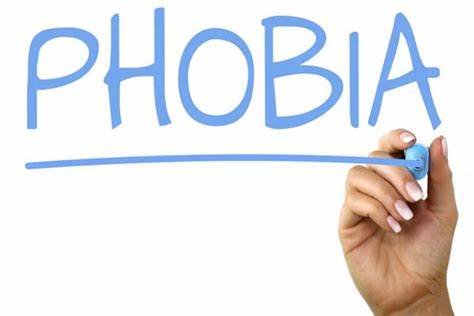There is an unspoken, covert, and arbitrary standard for working in the mental health community as a peer. In this land, discrimination goes without question sometimes.
In current mental health diagnosis and diagnostic therapies in social work, mental health, and medicine, it becomes even more challenging to think and live outside this world of biases and stigma. The standard I am talking about exists in the mental health professional helping realm. Peers disclose their lived experience more than any other discipline in behavioral health. ‘Peers’ are evaluated continuously and informally assessed by their colleagues for the quality of their health and their level of so-called level of ‘functioning.’ In doing so, our work readiness is always under question.
The mental health world is sharply divided when it comes to the best pathway forward for the provision of care and treatment. This is going to read like a silly question, given the last statement. Are we as divided as it seems? Or are we overlooking fundamentally important aspects about providing best practices in mental health treatment that we jump to judgment without thinking twice about the truth of what is and what is not the best mental health practice?
New treatments, the ever bolder new “miracle modalities” that are so laden with buzz words they say absolutely nothing about practicing mental health, therapy, or peer support. Suggesting the same formula is valid for camps in the peer support realm of mental health advocacy.
When taking a closer look at this formula, we unearth a few inequities in care provision. So, we have peer specialists that are against using psychiatric labels.’ Throw away the diagnosis’ is now circulated in multiple intersections of mental health care.
As a prosumer and mental health therapist, this writer often uses the DSM-5 to carry out treatment provision. Not for better understanding a client’s condition, but for creating a language that allows professionals to communicate with other colleagues in real-time and use that same information to share why their symptoms meet specific medically necessary treatment criteria. The list of why someone should use codified and manualized mechanisms in clinical treatment is endless.
And so is the list for continuing to decode and adding multiple meanings to overused words, limiting and restricting a patient’s experience.
Peers should utilize all information and perspectives out there, not picking and choosing “in” language or approaches because it is hot in the mental health community. Instead, choose approaches that connect all the dots, from medical necessity to wellness, and beyond. Just do it in a way that ensures all levels of care, treatment needs, and aspects of the person’s experience in the system benefit them at all times, not just in terms of the peer relationship.
All mental health practitioners need to continue to explore more liberal interpretations of patient experience with the new language, or language reconfigured in use and applied to clinical conditions in altogether new contexts and applications. The issue is that most people are polarized here. Either we disband and deconstruct every manual out there in mental health, or we must only use the DSM-5 and other overly medicalized interpretations of justifying a disorder on paper.
The peer world is similar in its theorizing of what it means to be a peer and provide peer support. The going trend is that being a peer does not have to mean that the person carries a diagnosis. It was based solely on the culture and behavior of the peer principle of providing mutual support.
Well, this a giant leap from good practice.
Why, as a consumer receiving peer support, would someone ever, ever, want someone without a diagnosis, label, or identified (either self or through a system of care) providing services if they are not the ‘peer’?
On a clinical level, when we work in a more extensive care system, with multiple professional attitudes, perceptions, and generally, ways of doing things. Not to mention the medically solvent way of practicing. We need to consider all layers of treatment and the client experience before endorsing this camp’s limited understanding of the best mental health practices.
Without having a peer in a mental health system identifying as having a condition, what service is this person providing other than their belief inequality or disparities in treatment? Egalitarianism is wonderful. This writer is in full support of it.
As a person with a schizophrenia diagnosis, I prefer to work with a peer in the context of having a mental health disorder.
We encounter daily obstacles because of our condition. Doubly true for peer work, as being a peer is about bonding over shared experiences and deriving meaning from it, as well as knowledge in how to overcome life’s challenges given similar experiences. Sure, we do not need to “have a label,” but there must be some sort of commonality besides a shared notion of equality and systems disparities we can bond over during session or time together as peers.
In the end, if peers are going to be genuinely savvy about providing services. Then we must get underneath the actual authentic experiences of people and not be afraid to utilize clinical intakes and manualized forms to provide services. Sure, we must also construct new descriptive and wholistic approaches to gathering information and providing services, but that is a no brainer. Let us connect peers with similar challenges, either psychiatric conditions or environmental challenges, so both people can benefit from learning how to take on life challenges together. That is what being a peer is!
Every agency I have worked for exists a secret conversation, an informal meeting, and ongoing dialogue about a particular peer’s mental health status when an incident or unexpected event occurred. For example, if a peer called out sick, or there was a new and unusual behavior in the peer’s day-to-day disposition, all of a sudden, that peer competency was under question. The etiology of this discrimination runs deep. Therapists and psychologists without any lived experience are somehow above reproach, outside, and between the rules for social norms, healthy attitudes, and people’s perception of healthy living and interpersonal rules of engagement.
I knew plenty of professionals that would talk about: “fucked up marriages” or “explosive” behaviors at private social functions or work. Somehow, someway, these professionals are not considered sick or in need of treatment. These behaviors are widespread. What is not so common is the license for peers to mimic this behavior. Peers who want to feel comfortable in their shoes being themselves without fear of losing their jobs or respect from their colleagues cannot behave like this without fear of being called ‘sick.’
This disparity was so visible and yet so brazenly discriminatory in the jobs I have held and suffered trauma from the entire experience working as a peer with lived experience.
As a peer, my education, disposition, presentation, focus, and ability to do a job are under the radar. Given that we live in a world of stereotypes, discrimination, and labels, peers are always judged by other team members when working in mental health or interdisciplinary teams. We are considered not quite healed yet, or still need further recovery to be successful or ready to use.
After openly disclosing my lived experience and working as a clinician prior, this writer has heard colleagues’ comments, the smirks, the language thrown around the watercolor. These were comments about my ability were somehow calculated as a general summary of their perceived progress and status recovery from a diagnosis.
My point is that peers’ worth and abilities seem to be summarized as a general accounting of their so-called functioning level. To be very clear about how this myth operates in the mental health system. A peer’s ability is determined by clinicians and their colleagues in the system to be only as good as their ability to come across and seem healthy to their fellow team members or agency members. The standard is absurd, as it is arbitrary. Since there is no clinical determination or way of assessing seeming healthy, the peers’ health status is bound up in a world of illusion and clinical mystique, discrimination, and an unnatural living mode.
The standard requires peers to demonstrate their skills and talents to help people heal, be publicly comfortable with their problems, and work alongside social workers and others in the helping profession. In doing peers handle the same or even more severe issues but are deemed less able to compartmentalize issues and engage in self-care?
This is evidence of a standard and attitude that favors and privileges one side of the binary in the mental health system and is the most decisive absurd division between clinicians and peers in the helping profession. Our peers are no different from the clinicians with the same problems and issues. We all have lived experience. We need to ask: are we managing enough to meet our expectations for ourselves and health and wellness?
Ultimately, our self-awareness, use of self-disclosure, and authenticity as helping professionals, regardless of our roles in the mental health system, will trump the issues of systemic and cultural oppression interfering with peers being comfortable with their history. I am suggesting that honesty is very much a part of the healing process. As a culture, we need to learn from lived experience. We must never lose sight of our mission to share the message and learned lessons from others who have walked in the same path in their recovery.
People may not always agree or like a personality. However, once we actively listen to everyone involved in the helping process mutually, we can begin disempowering the arbitrary and misleading images of peer professionalism disguised as the phony standard for peer work.
Max E. Guttman is the owner of Mindful Living LCSW, PLLC, a private mental health practice in Yonkers, New York.
- Max E. Guttmanhttps://mentalhealthaffairs.blog/author/max-e-guttman/
- Max E. Guttmanhttps://mentalhealthaffairs.blog/author/max-e-guttman/
- Max E. Guttmanhttps://mentalhealthaffairs.blog/author/max-e-guttman/
- Max E. Guttmanhttps://mentalhealthaffairs.blog/author/max-e-guttman/






